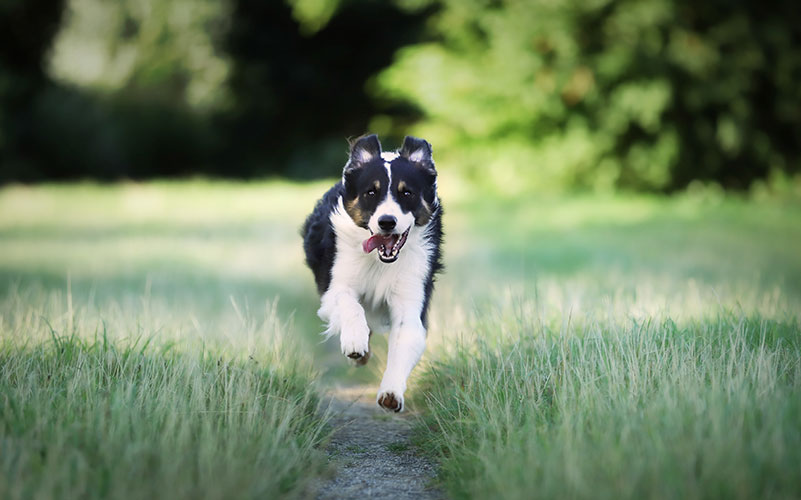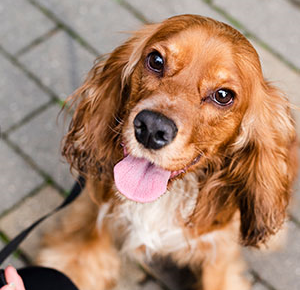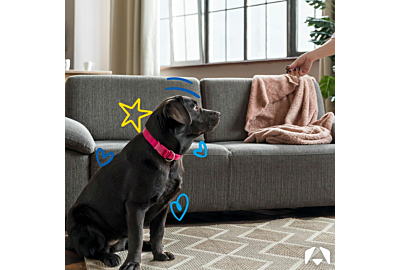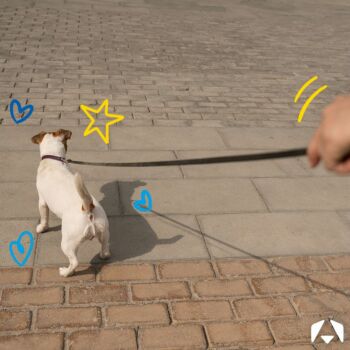

Teaching your dog the commands 'Stay' and 'Come' is a pivotal step in both their safety and your peace of mind. These two commands are more than mere tricks; they are essential for managing your dog's behaviour in various situations. 'Stay' is invaluable for keeping your dog stationary when needed, whether it's for safety or convenience. Meanwhile, 'Come' is a lifesaving command that ensures your dog returns to you promptly, regardless of distractions. This guide is designed to provide you with effective, easy-to-follow techniques that cater to dogs of all ages and breeds. Whether you're a first-time dog owner or looking to brush up on your training skills, these steps will enhance the bond between you and your dog, and establish a foundation of trust and obedience.


Understanding Your Dog’s Learning Process:
Before diving into the training process, it’s important to understand how dogs learn. Below are a few basic dog training tips to follow:
- Short Training Sessions: keep sessions around 5-10 minutes to maintain your dog’s attention. This will be much more effective than one longer session.
- Quiet, Distraction-Free Area: get the basics down in a place where your dog can focus without any interruptions. Add distractions later so your dog can get used to different environments.
- Positive Reinforcement: training should always involve praise and rewards to encourage the desired behaviour. We recommend using high-value treats that your dog loves but doesn’t get often.
- Patience and Calmness: only train your dog when you’re in a good mood to create a stress-free learning environment. Dogs are highly sensitive to human emotions, so they will be able to detect when you’re stressed or grumpy.
- End on a Positive Note: finish each training session with an exercise you know your dog can do to keep the experience positive


How to Train a Dog to 'Stay'
The 'Stay' command instructs your dog to remain in a specific position until you release them. This command is crucial in many situations, such as preventing them from running into a busy street or staying put during a social gathering.
Here are 6 straightforward steps you can follow to teach your dog to stay:
Step 1: Laying the Foundation
Before teaching ‘Stay’, ensure your dog reliably responds to the ‘Sit’ or ‘Lie Down’ command. If you need a refresher on these, check out our "Teaching Your Dog to ‘Sit’ and ‘Lie Down’” blog. It's a great starting point!
Step 2: Introduce the Cue
With your dog in the sitting or lying position, hold your hand up, palm facing them, and say “Stay” in a calm, firm tone.
Step 3: Use a Treat to Guide Your Dog
Hold off on giving your dog the treat immediately. First, instruct them with a "Stay" command, and then wait a few seconds before rewarding them. It's crucial to give the treat while your dog is still in the sitting or lying down position, rather than after they've stood up.
Step 4: Building Duration
Practise this many times in brief but regular sessions, progressively increasing the length of time your dog stays in the lying down position. Always reward your dog with a treat or praise, and then give a release cue like “Okay” or “Free” to signal the end of the stay.
Step 5: Adding Distance
Once your dog masters staying for a period, start to step away gradually. Always return to your dog to give the reward, reinforcing that staying put is the desired behaviour.
Step 6: Practice in Different Environments
Begin by adding mild distractions such as noises, movements and different locations. Always practice in a safe, controlled environment, especially in the early stages. If your dog breaks the stay, go back to a shorter duration or distance and build up again.


How to Train a Dog to 'Come'
The 'Come' command is about more than just getting your dog to return to you; it's about establishing a level of trust and obedience that is vital in various scenarios, from casual park visits to emergency situations.
Below are 6 easy steps you can follow to teach your dog to ‘Come’:
Step 1: Beginning the Training
Begin in a quiet, enclosed space to minimise distractions such as your living room or garden. Also ensure you have a tasty treat or a fun toy on hand.
Step 2: Introduce the Cue
Start by moving back a few steps, then call out your dog’s name and say “Come” in a friendly, enthusiastic tone. Make sure you’re holding their treat or toy to gran their attention. Getting into a lower position, like kneeling, can also be effective in motivating them.
Step 3: Use a Treat to Guide Your Dog
When your dog comes to you, gently hold their collar and reward them right away with the treat/toy and affection. This helps to reinforce the desired behaviour.
Step 4: Increasing Distance
As your dog gets better, gradually increase the distance from which you call them, until you reach a point where you can effectively call them to come between rooms or to come in and out of the garden.
Step 5: Practice in Different Environments
Practice the command in different settings with more distractions. Using long training leads during outside training can be helpful as they provide your dog with a degree of freedom without giving them complete free-rein, which is crucial at this stage of training.
Step 6: Always Remain Positive
Even if your dog takes time or gets distracted, never scold them when they come to you. Negative reactions can make your dog hesitant to come in the future. Instead, focus on calling them only when you are going to offer praise to ensure the ‘Come’ command is associated with positive experiences.




Conclusion
In summary, teaching your dog the 'Stay' and 'Come' commands is a rewarding journey that not only enhances their obedience but also deepens the bond between you and your furry companion. Remember, patience and consistency are key in this process. Celebrate your dog's progress, no matter how small, and always associate training with positive experiences. By mastering these commands, you're not only ensuring their safety in various situations but also fostering a relationship built on trust and understanding. Keep in mind that every dog learns at their own pace, so stay positive and persistent. With regular practice and a loving approach, your dog will soon respond reliably to these essential commands, making your shared moments more enjoyable and secure. Happy training!










